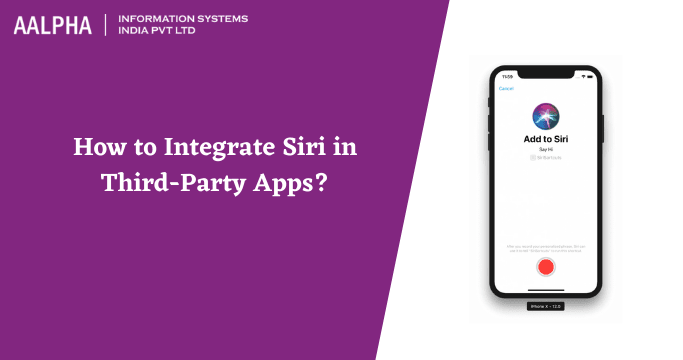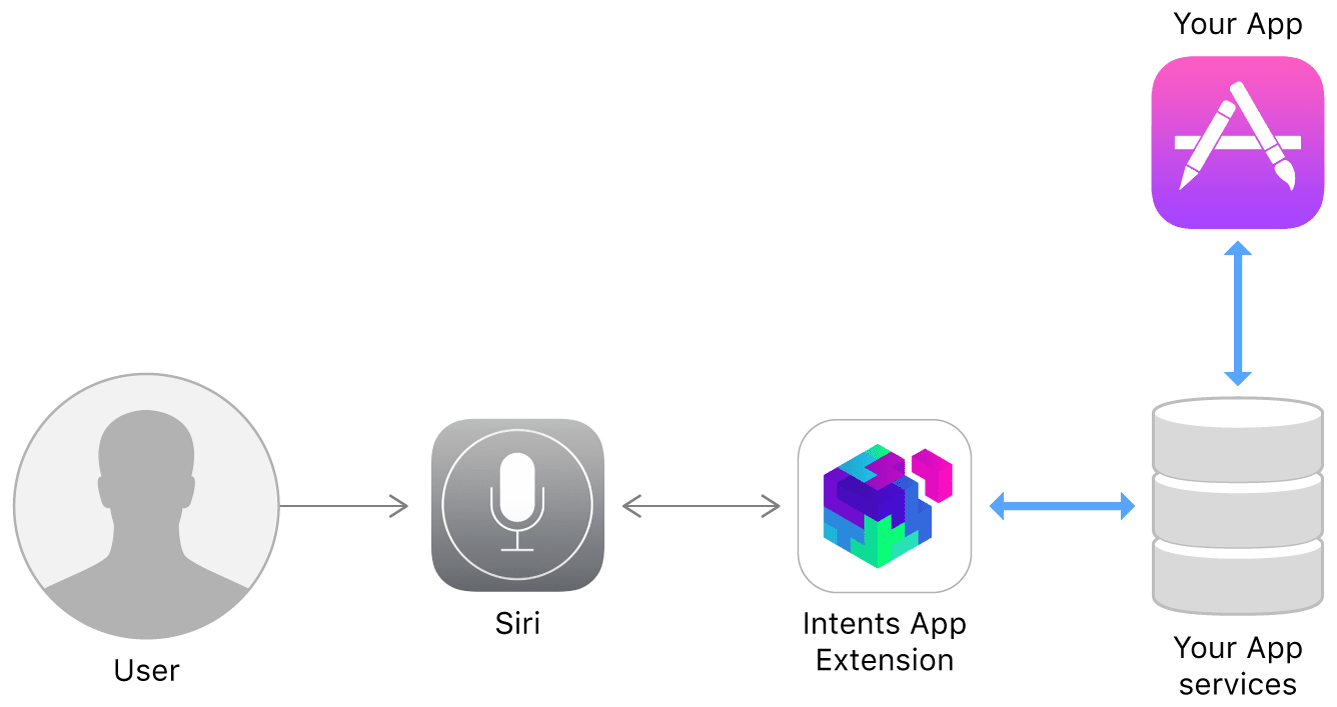One of the most significant announcements Apple has ever released was the availability of the Siri API to developers at Apple’s WWDC. This latest architecture, dubbed Sirikit, enables developers to incorporate Siri into their applications, thus simplifying getting things completed.
What exactly is Siri?
Siri was created by Apple in 2011 and is the world’s first artificial intelligence-based speech recognition assistant. This was programmed in Objective-C for platforms such as the iPhone, Apple iPad, Macintosh, and Apple TV. This was a one-of-a-kind innovation that enabled customers to control their mobile devices through voice commands.
How Siri works?
Siri uses two technologies: voice recognition and processing of natural language. Voice recognition is used for the text conversion of the voice command. So, for example, you will see the same text on the screen when you say something. At this moment Siri wakes up and is ready for order.
But it is not that easy. Everyone may use the same language, but the accents vary from city to city. This makes it difficult to analyze Siri’s command.
For this purpose, Apple’s engineers used machine learning to train several Siri models for effective speech reconnaissance.
What exactly is Sirikit?
Sirikit is a platform that Apple recently released for developers of iOS applications. This enables iPhone software creators to customize Siri’s capabilities and combine them with third-party applications to provide the optimal user experience. Previously, Siri integration with apps was limited to a few categories of applications, including ride booking, texting, photo search, payments, VoIP calling, and fitness, but the list is constantly growing with iOS 12.
It is worth mentioning that Sirikit does not accept all app domains. A domain is a set of items that Siri is aware of. Within realms, there are Intents, which are Siri-capable behaviors.
Pros and Cons of Using Sirikit in iOS Applications?
Finally, Apple catches up to Google Now, Cortana, and Alexa by enabling third-party software collaboration with Siri. Apple introduced Sirikit to allow developers to incorporate Siri into their applications, but it still has several drawbacks. Let us examine them one by one.
What are the Advantages?
- It is estimated that the voice recognition market will hit $18 billion by 2023, with Sirikit allowing iPhone app designers to participate.
- Sirikit is a significant feature in iOS application growth. It contributes to the app’s efficiency improvement.
- Sirikit is compatible with six distinct types of applications, including video and audio calls, email, fitness, and payment apps.
What are the disadvantages?
- Sirikit is only accessible on iOS 10 and later iterations of the operating system. This initially limits the demand for iOS developers.
- Though developers may define any word when enabling Siri in third-party applications, Sirikit has word limitations.
- Apps that integrate Siri can make errors when dealing with different accents of users for whom Siri assumes commands.
How to incorporate Siri into the applications?
You can learn Siri integration with apps in a rather basic and informative manner in the following sections.
- Adding Extension
As previously said, two standalone applications on iOS are unable to communicate with one another. This is where Sirikit falls in. It enables one app to communicate with another and exchange data. This is referred to as the extension mechanism. Siri accomplishes this by the usage of two extensions:
- Intent Extension
Siri and the program can communicate through the purpose extension. It is essential for contact, and Siri cannot be used without it.
- Intent UI Extension
When developers choose to present a custom view to their customers, they use the Purpose UI extension. Siri comes with a default view, but developers may customize it for their apps.
- Editorial intentions
After adding the extension, the “info.plist” file for the intent’s extension is modified to instruct the app on which requests to process. Additionally, developers should provide details such as a category, a title, a summary, parameters, and their categories, and so on. This enables the app to determine which intents are appropriate.
The developers must decide the terms necessary to process the requests. This simplifies the app’s function a little bit. Additionally, the mentioned terms assist the app in comprehending the user’s purpose.
- Execute intents.
That is all that is needed to launch your iOS application with Siri integration. Additionally, ensure that Siri is available in the App ID for this to function. To enforce, follow these steps:
- Ascertain that the goal Intents Extension is chosen.
- It should be run.
- As XCode prompts you to run the program, choose Siri.
Once all is in place, initiate an interaction with Siri to test your intents extension.
WhatsApp, LinkedIn, Google News, Pinterest, and Car Commands are only a few applications that use Siri and have already incorporated Sirikit.
Conclusion
Sirikit is a relatively new feature that was introduced in recent years. As a result, iOS application developers may require additional time to understand the framework better. In addition, one of the aspects that can cause issues for the user is word limitations. However, Apple is attempting to address this issue by upgrading the framework to make it more adaptable.
Are you planning to integrate Siri into Third-Party Apps? then feel free to fill our contact form for a free consultation today!





Share This Article:
Written by:
Muzammil K
Muzammil K is the Marketing Manager at Aalpha Information Systems, where he leads marketing efforts to drive business growth. With a passion for marketing strategy and a commitment to results, he's dedicated to helping the company succeed in the ever-changing digital landscape.
Muzammil K is the Marketing Manager at Aalpha Information Systems, where he leads marketing efforts to drive business growth. With a passion for marketing strategy and a commitment to results, he's dedicated to helping the company succeed in the ever-changing digital landscape.